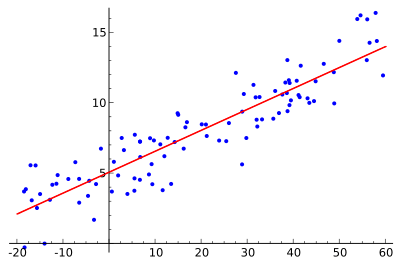Ordered probit
| Part of a series on Statistics |
| Regression analysis |
|---|
 |
| Models |
| Estimation |
| Background |
|
In statistics, ordered probit is a generalization of the popular probit analysis to the case of more than two outcomes of an ordinal dependent variable. Similarly, the popular logit method also has a counterpart ordered logit.
For example, in clinical research, the effect a drug may have on a patient may be modeled with ordered probit regression. Independent variables may include the use or non-use of the drug as well as control variables such as age and details from medical history such as whether the patient suffers from high blood pressure, heart disease, etc. The dependent variable would be ranked from the following list: complete cure, relieve symptoms, no effect, deteriorate condition, death.
The model cannot be consistently estimated using ordinary least squares; it is usually estimated using maximum likelihood.
Suppose the underlying relationship to be characterized is[1]
- ,
where is the exact but unobserved dependent variable (perhaps the exact level of improvement by the patient); is the vector of independent variables, and is the vector of regression coefficients which we wish to estimate. Further suppose that while we cannot observe , we instead can only observe the categories of response:
Then the ordered probit technique will use the observations on , which are a form of censored data on , to fit the parameter vector .
References
- ↑ Greene, William H. (2012). Econometric Analysis (Seventh ed.). Boston: Pearson Education. pp. 827–831. ISBN 978-0-273-75356-8.
Further reading
- Becker, William E.; Kennedy, Peter E. (1992). "A Graphical Exposition of the Ordered Probit". Econometric Theory. 8 (1): 127–131. doi:10.1017/S0266466600010781.